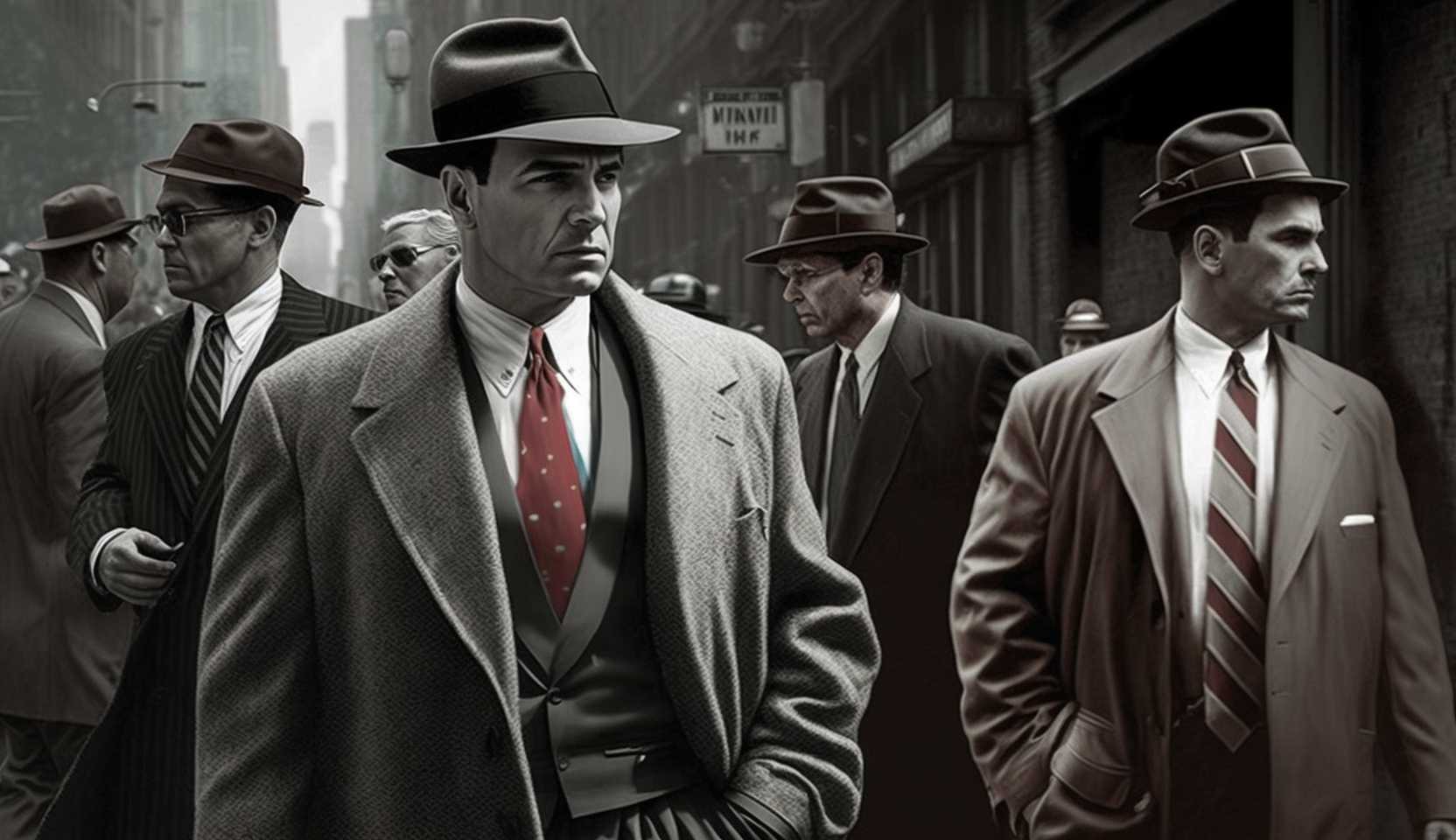The terms “gang” and “mafia” are often used interchangeably, leading to confusion about their true meaning and distinctions. While both involve organized groups of individuals operating outside the law, they differ significantly in their structure, origins, and activities. I recall a time I was watching a documentary about organized crime, and I was surprised to learn about the subtle but important distinctions between gangs and mafias. This sparked my curiosity, leading me to delve deeper into the fascinating world of these underground organizations.

Image: nerdburglars.net
To truly appreciate the differences, we need to understand their individual contexts and the nuances that set them apart. This article will provide a clear and comprehensive explanation of the key differences between gangs and mafias, exploring their structures, origins, and their impact on society.
Understanding the Definitions
Let’s start with basic definitions. A gang is typically a group of individuals, usually young people, who come together for a shared purpose, such as protection, social status, or criminal activity. They often operate in specific neighborhoods or territories, engaging in activities like drug dealing, theft, or violence. Gangs are often characterized by their loose structure, rapid evolution, and a strong emphasis on local ties.
In contrast, mafia, specifically referring to the Italian Mafia (Cosa Nostra), is a highly organized and hierarchical criminal organization with a long history and established traditions. It operates with a strict code of conduct, a strong focus on family ties, and a network of powerful ties stretching across multiple countries. Unlike gangs, mafias engage in a wider range of criminal activities, including extortion, racketeering, illegal gambling, and even political influence.
Gangs: A Closer Look
Gangs have existed in various forms throughout history, often emerging in marginalized communities as a means of protection or social identity. They are often characterized by:
- Loose Structure: They typically lack a rigid hierarchy and have a fluid membership, with members coming and going.
- Local Focus: Their operations primarily focus on a specific geographic area, often vying for control of their territory.
- Informal Leadership: While a leader might emerge, authority is often distributed among various members.
- Diverse Activities: Engaging in activities ranging from petty theft and drug dealing to more serious crimes like assault and murder.
The activities of gangs are often driven by immediate needs for survival or protection rather than long-term plans. This can make them unpredictable and dangerous, posing a significant threat to communities.
The Mafia: A Different Breed
The Italian Mafia, known as Cosa Nostra, is synonymous with organized crime. It differs from gangs in numerous ways:
- Hierarchical Structure: The Mafia is characterized by a highly structured hierarchy, with a strict code of conduct known as “Omertà.”
- Family Ties: Membership is often based on family ties and loyalty, with strict rules governing behavior and decision-making.
- Long-Term Strategy: They focus on long-term criminal activities and strategies, often spanning multiple generations.
- Extensive Network: These organizations have deep roots and influence, extending their operations across national borders.
- Diversified Activities: They engage in a wider range of activities, including drug trafficking, money laundering, extortion, and even political corruption.
The Mafia’s ability to infiltrate various sectors of society, including politics and industry, makes them a formidable force.

Image: www.studiobinder.com
Modern Trends and Developments
In recent years, both gangs and mafias have undergone significant transformations. Globalization, technology, and increased global cooperation have all impacted their operations. For instance, online platforms are increasingly used for recruitment, drug trafficking, and money laundering, posing new challenges for law enforcement.
The lines between gangs and mafias have also blurred. Some gangs have adopted Mafia-style tactics, establishing more structured hierarchies and diversifying their criminal operations. This trend has raised concerns about the evolution of organized crime and its potential impact on society.
Expert Tips and Advice
Understanding the differences between gangs and mafias is essential for those working in law enforcement, social work, or community development. Here are some tips:
- Stay Informed: Keep up-to-date on current trends and developments in organized crime by following reputable news sources and research institutions.
- Recognize the Signs: Learn to identify the potential signs of gang or Mafia activity in your community, such as increased violence, drug dealing, or unexplained wealth.
- Report Suspicious Activity: Don’t hesitate to report suspicious activities to the authorities. Your information could help prevent criminal activity and protect your community.
By recognizing the signs and reporting suspicious activities, you can help combat the harmful effects of organized crime in your neighborhood.
Frequently Asked Questions
Q1: Are all gangs violent?
Not all gangs are violent, but many engage in violent activities as a way to maintain power and control over their territory.
Q2: How do I stay safe from gangs?
It’s important to be aware of your surroundings, avoid high-crime areas, and avoid engaging in risky behaviors such as drug use or dealing.
Q3: Is there a difference between organized crime and the Mafia?
While the Mafia is a type of organized crime, not all organized crime groups are connected to the Mafia. Organized crime refers to any criminal activity carried out by a structured group.
Q4: Do gangs operate internationally?
While gangs are typically local, some have expanded their operations across national borders, often due to drug trafficking or money laundering activities.
Q5: What are the most dangerous gangs in the world?
Determining the “most dangerous” is subjective and can fluctuate. However, some groups often cited as being dangerous include the MS-13, the Mara Salvatrucha, and the Mexican cartels.
Gangs Vs Mafia
https://youtube.com/watch?v=n7BKldTBcyU
Conclusion
The terms gang and mafia are often used interchangeably, but their differences are crucial. This article highlighted the distinctions between these two types of organized crime. It is essential to understand these differences to effectively combat the threats they pose to society. Are you interested in learning more about the history of organized crime or the specific challenges posed by different types of gangs?






